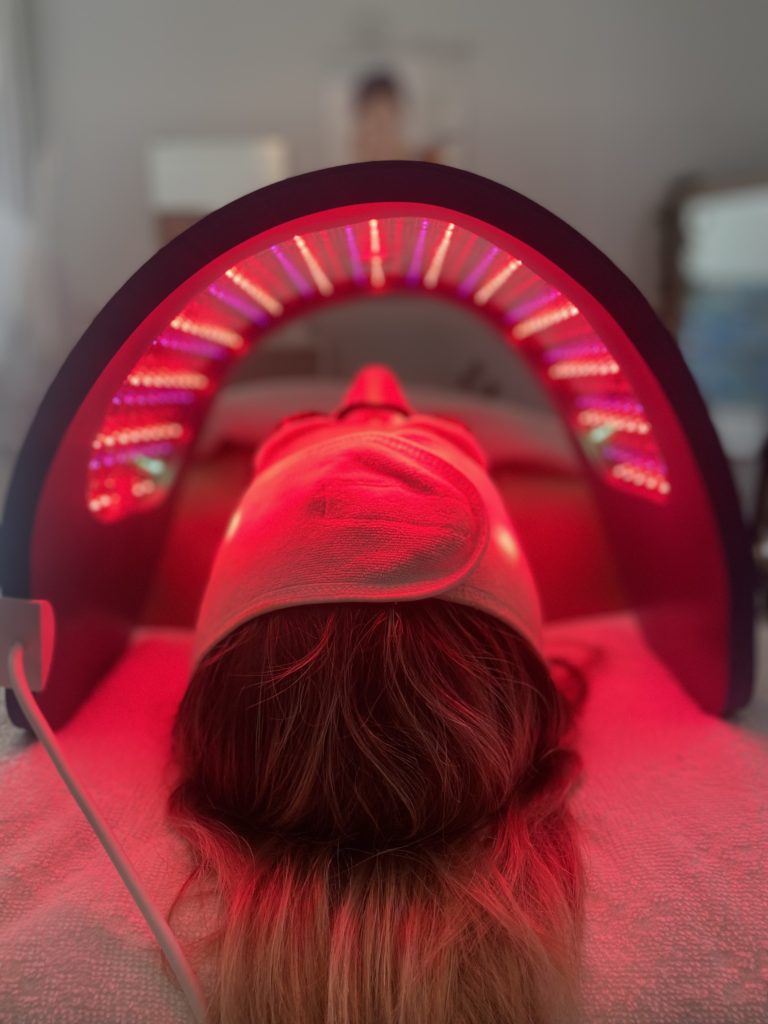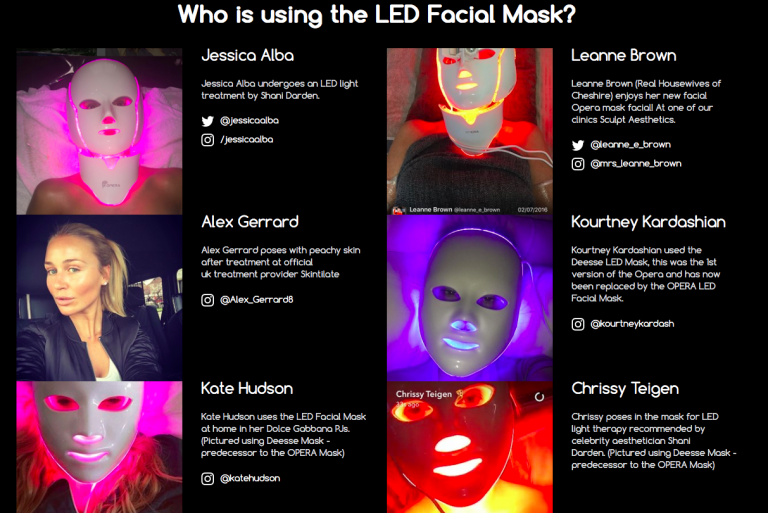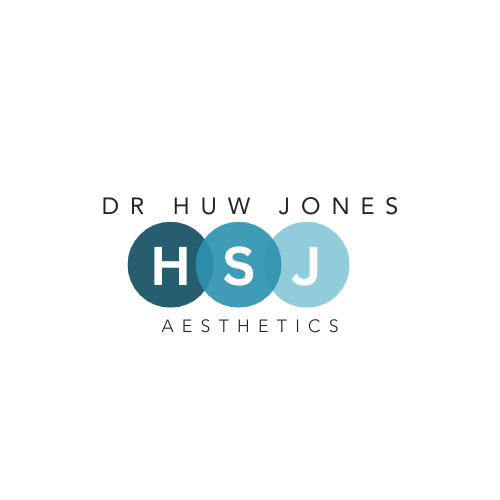LED Light + Cryo Mask
- Home
- |
- LED Light + Cryo Mask
Treatments
LED MASK
Low-level light therapy (LED) facial masks provides a multitude of skin rejuvenation treatments to the face and neck.
It is used for:
- Skin rejuvenation
- Acne treatment
- Post treatment care and anti-inflammatory
- Galvanic current with hydrogel mask
We only use the two TOP leading brands when it comes to LED light therapy
Celluma Pro and OPERA

CRYO THERAPY MASK
What is it?
Cryotherapy is a treatment which exposes the body to very low and near freezing temperatures to treat a variety of issues. It stimulates many bodily systems and provides benefits such as enhancing injury recovery time as well as boosting the immune system.
What are the benfits?
Cryotherapy on the face is used to boost cell rejuvenation and stimulate collagen production leading to firmer and plumper looking skin. It is also used after more invasive treatments to help speed up healing time and calm the skin. It reduces pigmentation and inflammation and has also shown to improve chronic skin conditions.
Can it be combined with other treatments?
Yes, we always combine our Cryomask Therapy after the following treatments:
Will there be any downtime?
It is 100% safe when used in a professional environment and there is no downtime at all.

LED Light + Cryo Mask
- Home
- |
- LED Light + Cryo Mask
What are Dermal Fillers used for?
- Replace volume loss from the mid-face and temples
- Elevate and reposition eyebrows which have dropped
- Replace volume loss in the temples
- Lift Jowels and sagging of the jawline
- Treat volume loss in the hands
- Reshape the nose
- Enhance Cheeks
What Dermal Fillers do you use?
- Belotero
- Juvederm
- Teosyal
- Restylane/Perlane
These products are made from Hyaluronic Acid which is a complex polysaccharide (sugar) found in a number of sites in our bodies – Joints, Skin, Eyes. As the structure is identical to that in our bodies and as there is no animal product, the risk of allergies is minimal and allergy testing is not therefore required.
Other fillers used for specific indications include:
- Radiesse
- Ellanse
- Sculptra
Who will perform the treatment?
What are the common Side effects with Dermal Filler Treatments
Before deciding the treatment with dermal fillers, a number of general health aspects need to be clarified. A particular tendency to bruising, medication that thins the blood, like aspirin, warfarin or clopidogrel may also lead to significantly more bruising and swelling and needs to be known in advance. The risk or allergic reactions with current dermal fillers is very low and they do not require preliminary allergy testing. Redness, swelling and bruising at the point of injection are possible with all types of fillers, and most frequently are limited to one or two days after the treatment. More prolonged redness or swelling is possible and will been to be brought to the attention of your doctor promptly.
The risk of infection is present whenever using injectable treatments and is a consideration also with fillers. Typically, the treatment does not require an antibiotic cover, but if you have any suspicion of an infection, you need to discuss your concerns promptly with your doctor. Thorough cleaning of the skin before treatment is essential.
Pain at the injection site is usually limited, and the treatment can be carried out either using local anaesthetic cream, local anaesthetic injections or no anaesthetic depending on individual preferences.
Delayed side effects include the formation of lumps. if the Dermal Filler used is composed of Hyaluronic Acid ( Juvederm, Beltero, Teosyal, Restylane etc) this is rare and these can usually be dissolved quite easily with Hyalase. Other products such as Radiesse, Sculptra, Ellanse etc that are often promoted as longer lasting but may have an increased risk and this should be discussed with your doctor. They can often be managed medically but in very rare circumstances surgical removal may be required.
How and where are the treatments provided?
Treatment with injectable dermal fillers is an office based procedure that usually takes less than 30 minutes. It is possible to apply local anaesthetic cream on the skin or on the lips to decrease sensation and reduce the discomfort related to the treatment, although many people find this unnecessary.
Volume augmentation of the lips can also be carried out using regional nerve block which means that the lips become completely numb, but they will take several hours to recover, similar to the dental local anaesthetic.
The results after the treatment are immediate and depending on the area treated and product used these results.
What should I do after the treatment?
After the treatment, it is important to avoid excessive rubbing to the treatment areas and application of cold is sometimes suggested. Specific advice will be given to you by Dr Jones appropriate to the area treated and product used.
